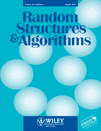
RANDOM STRUCTURES & ALGORITHMS
Scope & Guideline
Unraveling the Mysteries of Randomness in Mathematics
Introduction
Aims and Scopes
- Random Graph Theory:
The journal emphasizes the study of random graphs, including their properties, thresholds, and behaviors in various contexts, such as connectivity, expansion, and Hamiltonicity. - Probabilistic Methods in Combinatorics:
Research that applies probabilistic techniques to combinatorial problems is a core focus, including topics like Ramsey theory, coloring, and the study of extremal graph properties. - Statistical Mechanics and Random Processes:
The journal includes studies that relate random structures to statistical mechanics, encompassing models such as percolation, random walks, and dynamics on graphs. - Algorithmic Aspects of Random Structures:
A significant aim of the journal is to explore algorithmic approaches to problems involving random structures, including efficient algorithms for counting, sampling, and optimization. - Applications in Network Theory:
Research that applies random structures to real-world networks, including social networks, biological networks, and communication networks, is a prominent area of interest.
Trending and Emerging
- Random Geometric Graphs:
There is an increasing focus on random geometric graphs, exploring their properties and applications in wireless networks and spatial modeling. - High-Dimensional Random Structures:
Research examining high-dimensional random structures, particularly in relation to geometry and topology, is on the rise, reflecting the growing interest in these areas. - Stochastic and Adaptive Processes:
Emerging themes related to stochastic processes and adaptive algorithms have gained traction, emphasizing the dynamic behavior of random structures over time. - Interdisciplinary Applications:
The journal is witnessing a trend towards interdisciplinary research that connects random structures to fields such as biology, computer science, and social sciences, highlighting their broad applicability. - Statistical Inference and Learning on Graphs:
With the rise of machine learning, there is a growing body of work focusing on statistical inference and learning processes on random graphs, indicating a convergence of graph theory and data science.
Declining or Waning
- Classical Combinatorial Problems:
While foundational combinatorial problems remain important, there has been a noticeable decrease in papers solely focused on classical results without a stochastic or algorithmic angle. - Deterministic Graph Algorithms:
Research focusing exclusively on deterministic algorithms for graph problems has waned, as the journal increasingly prioritizes probabilistic and randomized approaches. - Static Models of Graphs:
There appears to be a decline in interest in static models of graphs, with a shift towards dynamic and adaptive models that better reflect real-world applications. - Elementary Graph Theory:
Papers that cover basic or elementary results in graph theory without a strong connection to randomness or algorithms have been published less frequently.
Similar Journals
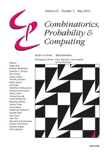
COMBINATORICS PROBABILITY & COMPUTING
Advancing Knowledge in Combinatorics and ProbabilityCOMBINATORICS PROBABILITY & COMPUTING is a premier journal published by Cambridge University Press, focusing on the cutting-edge fields of combinatorics, probability, and their computational aspects. Established in 1992 and set to continue its impactful discourse through 2024, this journal holds a distinguished reputation, reflected in its Q1 ranking in applied mathematics, computational theory, and statistics, showcasing its pivotal role in advancing research in these areas. With an ISSN of 0963-5483 and an E-ISSN of 1469-2163, the journal welcomes high-quality papers that contribute to the theoretical foundations and practical applications of the disciplines. While it is not available as open access, its accessibility through institutional subscriptions ensures wide readership within academia. The journal is a vital resource for researchers, professionals, and students alike, providing a platform for innovative ideas and pioneering research that shapes the future of mathematics and computer science.
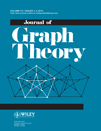
JOURNAL OF GRAPH THEORY
Pioneering Research in Discrete Mathematics and CombinatoricsJOURNAL OF GRAPH THEORY, published by WILEY, stands as a pivotal resource in the fields of Discrete Mathematics and Combinatorics, as well as Geometry and Topology. Since its inception in 1977, this esteemed journal has fostered the dissemination of influential research, currently categorized in the prestigious Q1 quartile according to the latest metrics for 2023. With an ISSN of 0364-9024 and an E-ISSN of 1097-0118, it caters to a global readership of researchers, professionals, and students dedicated to advancing their knowledge in graph theory. By maintaining a strong rank in Scopus—39th out of 106 in Geometry and Topology, and 38th out of 92 in Discrete Mathematics and Combinatorics—it reflects its significance and impact within the academic community. Although it does not offer open-access options, its rigorous peer-review process ensures that only high-quality original research is published, thus reinforcing its reputation as a leading journal in this mathematical domain.

ELECTRONIC COMMUNICATIONS IN PROBABILITY
Catalyzing Discoveries in Probability and UncertaintyELECTRONIC COMMUNICATIONS IN PROBABILITY is a distinguished open-access journal published by the Institute of Mathematical Statistics (IMS) that has been contributing to the field of statistics and probability since its inception in 1996. With a commitment to disseminating high-quality research, this journal plays a crucial role in fostering advancements in the areas of statistical theory and probabilistic models. The journal's impact is reflected in its notable rankings, including a Q2 categorization in both Statistics and Probability and Statistics, Probability and Uncertainty for 2023, indicating its relevance and scholarly influence in the academic community. Having a consistent converged publication timeline from 1996 to 2024, it provides researchers, professionals, and students with a platform to share and access innovative studies without barriers. With an aim to enhance our understanding of statistical applications and methodologies, ELECTRONIC COMMUNICATIONS IN PROBABILITY serves as an essential resource for those engaged in statistical research and applications.

Discrete Analysis
Championing Rigorous Research in Discrete DisciplinesDiscrete Analysis, published by ALLIANCE DIAMOND OPEN ACCESS JOURNALS, is a pioneering open access journal that has been contributing to the fields of Algebra, Number Theory, Discrete Mathematics, Combinatorics, Geometry, and Topology since its inception in 2016. Based in the United Kingdom, this journal is highly regarded, holding a prestigious Q1 ranking across key mathematical disciplines as of 2023, which underscores its influence and reputation within the academic community. With rigorous peer-review standards and an accessible platform, Discrete Analysis is dedicated to disseminating high-quality research that fosters advancements in mathematical theory and application. By embracing the open access model, the journal ensures that scholarly work is readily available to researchers, professionals, and students alike, promoting greater collaboration and innovation in mathematical research. For up-to-date insights and contributions in the field, Discrete Analysis is an essential resource.

ELECTRONIC JOURNAL OF COMBINATORICS
Illuminating Trends in Geometry and TopologyELECTRONIC JOURNAL OF COMBINATORICS, an esteemed publication in the field of combinatorial mathematics, has been a significant platform for innovative research since its inception in 1996. Published by the ELECTRONIC JOURNAL OF COMBINATORICS, this open-access journal has made its complete repository freely available since 2014, encouraging broad international collaboration and dissemination of knowledge. The journal maintains a robust reputation, boasting various category quartiles including Q1 rankings in Applied Mathematics and Discrete Mathematics, highlighting its importance in advancing research and applications in these critical fields. With a clear commitment to showcasing high-impact work and contributing to the ongoing discourse in computational theories, the journal appeals to researchers, professionals, and students alike. Scholars can access a wide array of rigorous articles that explore the latest trends and developments in combinatorial techniques, geometry, and topology, making this journal an essential resource for anyone vested in mathematical sciences. For more information, please refer to their office based at the University of Delaware, Department of Mathematical Sciences.

Journal of Fractal Geometry
Advancing Knowledge in Fractal GeometryWelcome to the Journal of Fractal Geometry, an esteemed publication in the fields of Applied Mathematics and Geometry, proudly published by the European Mathematical Society (EMS). With its open access model initiated in 2021, the journal ensures that groundbreaking research is readily available to scholars all around the globe. Since its inception, the journal has positioned itself as a vital platform for the dissemination of innovative research, focusing on the intricate study of fractal structures and their applications in various scientific domains. With an impressive H-index reflecting the journal's influence, it holds high rankings in respected databases, specifically ranking in the Q1 and Q2 quartiles for its authoritative contributions in applied mathematics as well as geometry and topology. Located in Berlin, Germany, the journal is dedicated to fostering a vibrant community of researchers, professionals, and students engaged in the beauty and complexity of fractals, making it an essential resource for advancing knowledge in this dynamic area of study.
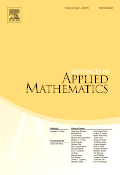
ADVANCES IN APPLIED MATHEMATICS
Illuminating the Path of Mathematical DiscoveryADVANCES IN APPLIED MATHEMATICS, published by ACADEMIC PRESS INC ELSEVIER SCIENCE, is a prestigious journal that has served the mathematical community since 1980. With its ISSN 0196-8858 and E-ISSN 1090-2074, the journal is based in the United States, specifically in San Diego, CA. As a leading periodical in the field, it holds a notable Q2 ranking in Applied Mathematics and has been consistently ranked in the 43rd percentile among similar journals, illustrating its relevance and impact within the discipline. Although not an Open Access journal, ADVANCES IN APPLIED MATHEMATICS plays a crucial role in disseminating significant research findings, theoretical studies, and innovative applications of mathematics that address real-world problems. Researchers, professionals, and students alike will find valuable insights in its carefully curated publications, making it an essential resource for those looking to advance their understanding and application of mathematics.
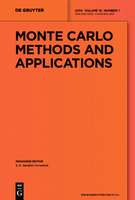
Monte Carlo Methods and Applications
Pioneering New Paths in Statistical SimulationsMonte Carlo Methods and Applications is an esteemed academic journal published by WALTER DE GRUYTER GMBH based in Germany, specializing in the fields of applied mathematics and statistics. With its ISSN 1569-3961 and E-ISSN 0929-9629, the journal has made significant contributions to the methodology and application of Monte Carlo techniques since its inception in 1995. As a vital resource for researchers, professionals, and students, it provides a platform for disseminating cutting-edge research, innovative methodologies, and diverse applications related to Monte Carlo simulations. Despite its current standing in the Q4 category for both applied mathematics and statistics, the journal is poised for growth and engagement within the academic community, helping to bridge the gap between theoretical advances and practical implementations. The journal's emphasis on rigorous peer-reviewed content ensures the highest quality of publications, making it a reliable source for pivotal insights in the realm of probabilistic modeling and computation.
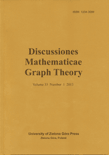
Discussiones Mathematicae Graph Theory
Advancing the Frontiers of Graph TheoryDiscussiones Mathematicae Graph Theory is a prestigious peer-reviewed journal published by UNIV ZIELONA GORA, specializing in the dynamic fields of Graph Theory, Discrete Mathematics, and Applied Mathematics. With an ISSN of 1234-3099 and an E-ISSN of 2083-5892, this Open Access journal has been providing unrestricted access to its content since 2013, promoting widespread dissemination and engagement in academic research. Established in 2009 and continuing its influential publication through 2024, Discussiones Mathematicae Graph Theory is committed to fostering collaborations and innovations among researchers, professionals, and students alike. Its impressive category quartiles for 2023 show it ranks within the Q3 range for both Applied Mathematics and Discrete Mathematics and Combinatorics, as well as good positions within the Scopus rankings, ensuring its critical relevance in the mathematical community. By continuously highlighting groundbreaking research in graph theory, this journal stands as a vital resource for anyone looking to advance their knowledge and contribute to the evolving landscape of mathematics.
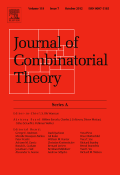
JOURNAL OF COMBINATORIAL THEORY SERIES A
Exploring Innovative Pathways in Theoretical Computer Science.JOURNAL OF COMBINATORIAL THEORY SERIES A, published by Academic Press Inc. Elsevier Science, stands as a pivotal platform for researchers in the realm of combinatorial mathematics and theoretical computer science. With an impact factor that underscores its influence and a well-respected reputation reflected in its rapid ascent to Q1 rankings in discrete mathematics and computational theory, this journal serves as a critical resource for academics seeking to advance their understanding of complex combinatorial structures and algorithms.
Founded in 1971, the journal covers a wide spectrum of topics within combinatorial theory, providing a robust forum for innovative research and theoretical advancements until 2025. Including a strong position in the Scopus rankings—notably, it ranks #10 out of 92 in discrete mathematics—the journal is essential for both emerging scholars and established professionals committed to pushing the boundaries of mathematical and computational inquiry. Researchers are encouraged to submit their findings to this esteemed publication, as it offers a non-open-access model that ensures rigorous peer review and high visibility within the academic community.